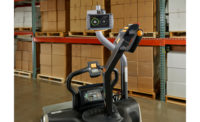A stroll down the aisles at PACK EXPO International was the beginning of a productivity wave that JTM Food Group is still riding three years later.
Joe Maas, vice president of the Cincinnati, Ohio-based company, says the Eureka moment happened when he came upon a film splicer that can be added to vertical form-fill-seal (VFFS) machines. The new splicer, from Butler Automatic, Middleborough, Mass., allowed JTM to use the same staffing and machinery to produce more end product. Increases in packaging line efficiency resulted in significant increases in output and profitability, since there is no additional labor. He began with one splicer and recently purchased three more, increasing the productivity of the packaging.
Food processing plant seeks productivity gains
JTM is a food processing plant with more than 700 food products, about 70% meat prepared foods and 30% non-meat prepared foods, mainly cheese. Founded by Jack Maas, Sr. as a neighborhood meat store in 1961, the family-owned company has grown to $170 million in annual sales with 430 employees.
About 65% of JTM’s products are sold to school lunch cafeterias, with 20% sold to restaurants, including national chains and general distribution through major foodservice warehouses. About 10% are sold to the military, including troops in Afghanistan and Iraq. A final 5% of JTM’s sales are to retail customers, including its large Kroger distribution area.
JTM runs a grind and form operation that produces hamburgers, meatballs and pork sausages; a kettle cooking operation for flowable food products like taco filling, macaroni and cheese and sauces; and a bakery operation that produces buns in a number of sizes and permutations. JTM also fields an extensive research and development team, with three educated chefs and other technicians constantly developing new products.
“Our No. 1 largest selling item is taco filling for school lunches and our No. 2 is macaroni and cheese. We offer 698 other products, and we are proud of every one of them,” says Maas. “Our newest product is beer cheese. One recipe we make with Sam Adam beer; we open a couple hundred barrels of beer and make 18,000 pounds an hour.”
JTM experienced a great deal of downtime when manually switching rolls of film on VFFS machines used for the grind and form and kettle cooking packaging operations. In fact, Maas estimates that it took about 15 minutes for each packaging roll changeover and splice to the next roll, mounting up over the course of a day. That 15 minutes included the actual time it took to change the roll as well as turning the machine off for the additional trips to the restroom, searching for film in storage areas and other minor items that took time.
The Eureka moment
While walking PACK EXPO Las Vegas 2013, Maas spotted a zero-speed automatic splicer at Butler Automatic’s booth. The automatic splicing technology joins a new roll to the expiring roll, maintaining registration without stopping the production line. The machines are typically configured vertically, with one running roll feeding the process and another in a standby position. When the running roll expires, the machine initiates a splice, joining the beginning of the new roll to the end of the expiring roll. An accumulator storing material feeds the downstream production while the splice occurs. When the splice is complete, the accumulator is re-filled and the expired roll can be changed while the new roll is running, eliminating roll change downtime.
After placing an inquiry, a salesperson visited JTM plant to show how the splicer works. Maas placed an order for one machine and brought it online to see how it would actually perform in his environment. The effect on production was immediate. He reckons it reduced film change from 15 minutes down to 10 seconds, making a huge positive impact on production output.
Splicers prove easy to operate and increase production with the same amount of labor
Maas acknowledges that he always worries about adding new pieces of equipment to a processing line for fear it will make the line more complex. However, he found it to be a straightforward machine that is routine to operate – easier than running a VFFS machine.
After the first Butler automatic web splicer proved successful, JTM purchased three more, making all the grind and form and kettle operations operate with VFFS machines equipped with Butler splicers.
“Each customer must make their own determination if it’s right for them, but everyone should at least look into it,” Maas adds. “Now, when I look at VFFS machines without a splicer, I am kind of shocked.”
JTM is starting to bump up against capacity, and the addition of the automated splicers allowed them to delay capital expenditures. That’s why it’s currently building another processing plant equipped with Butler splicers to accommodate future growth.
“The bottom line is that the automatic splicers give us more uptime on our VFFS machines, and we produce more product,” says Maas. “I have made a lot of money as a result of stopping by their booth.”



